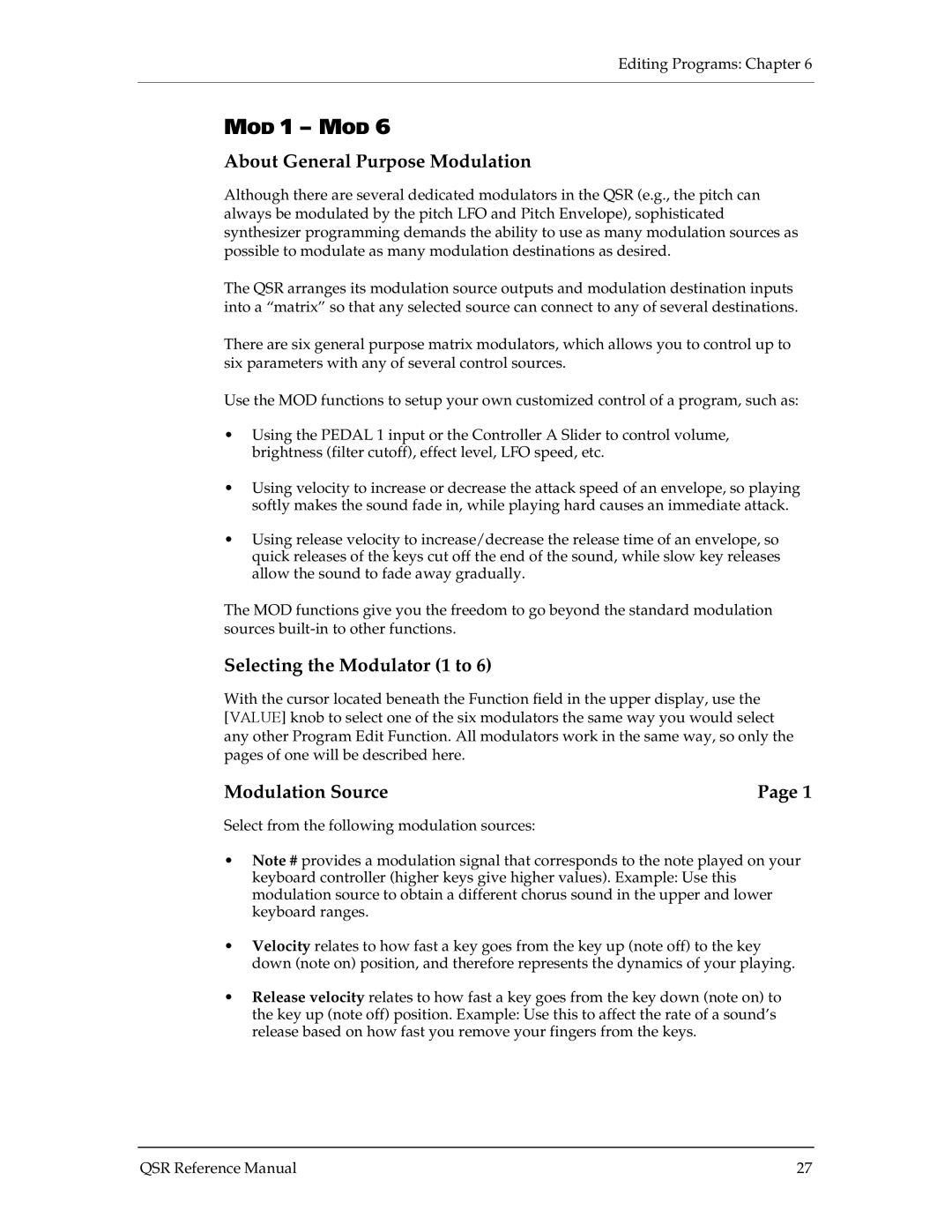
Editing Programs: Chapter 6
MOD 1 – MOD 6
About General Purpose Modulation
Although there are several dedicated modulators in the QSR (e.g., the pitch can always be modulated by the pitch LFO and Pitch Envelope), sophisticated synthesizer programming demands the ability to use as many modulation sources as possible to modulate as many modulation destinations as desired.
The QSR arranges its modulation source outputs and modulation destination inputs into a “matrix” so that any selected source can connect to any of several destinations.
There are six general purpose matrix modulators, which allows you to control up to six parameters with any of several control sources.
Use the MOD functions to setup your own customized control of a program, such as:
•Using the PEDAL 1 input or the Controller A Slider to control volume, brightness (filter cutoff), effect level, LFO speed, etc.
•Using velocity to increase or decrease the attack speed of an envelope, so playing softly makes the sound fade in, while playing hard causes an immediate attack.
•Using release velocity to increase/decrease the release time of an envelope, so quick releases of the keys cut off the end of the sound, while slow key releases allow the sound to fade away gradually.
The MOD functions give you the freedom to go beyond the standard modulation sources
Selecting the Modulator (1 to 6)
With the cursor located beneath the Function field in the upper display, use the
[VALUE] knob to select one of the six modulators the same way you would select any other Program Edit Function. All modulators work in the same way, so only the pages of one will be described here.
Modulation Source | Page 1 |
Select from the following modulation sources:
•Note # provides a modulation signal that corresponds to the note played on your keyboard controller (higher keys give higher values). Example: Use this modulation source to obtain a different chorus sound in the upper and lower keyboard ranges.
•Velocity relates to how fast a key goes from the key up (note off) to the key down (note on) position, and therefore represents the dynamics of your playing.
•Release velocity relates to how fast a key goes from the key down (note on) to the key up (note off) position. Example: Use this to affect the rate of a sound’s release based on how fast you remove your fingers from the keys.
QSR Reference Manual | 27 |
